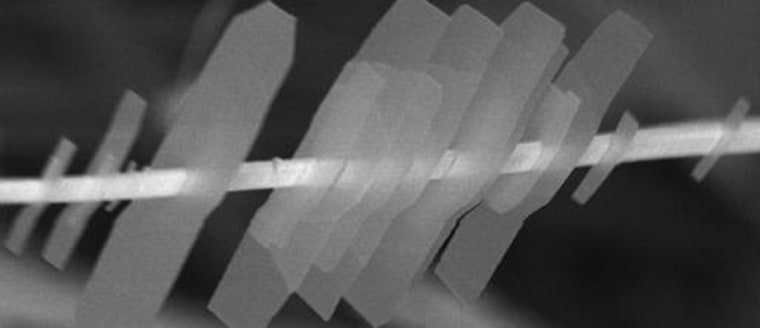Powerful energy storage devices of the future may trace their roots back to a research lab that cooked up “nano-shish-kebabs” out of germanium sulfide, a semiconductor material.
Unlike the skewered meats and assorted veggies grilled on backyard barbeques, these kebabs are single, three-dimensional structures that consist of sheets of the semiconductor material grown along a nanowire. Each wire is about 100 nanometers long.
The researchers believe these combined “heterostructures” are particularly promising for energy storage technologies such as lithium-ion batteries and next-generation supercapacitors.
“The nanowires of this heterostructure can provide efficient charge transfer for electrons and ions during the storage process and the nanosheets can provide larger surface areas that can hold more ions,” Linyou Cao, a materials scientist at North Carolina State University, told NBC News via email.
“The combined features of high surface area and efficient charge transfer is exactly what has been highly sought after for the improvement of energy storage performance.”
The use of germanium sulfide was a proof-of-concept, the team notes in a paper on the breakthrough published Sunday in the journal Nano Letters. Next, they aim to replicate the process in molybdenum sulfide, which is being eyed for energy storage applications.
The heterostructures could also be used to develop high-tech chemical sensors. Each sheet, Cao explained, can be designed to sense once specific organic compound. One heterostructure, with multiple nanosheets, could sense multiple compounds at once.
This may prove especially useful to the U.S. Army Research Office, which funded the research. “High-throughput sensing could be used for detecting explosive species in battle fields,” Cao explained.
John Roach is a contributing writer for NBC News. To learn more about him, check out his website. For more of our Future of Technology series, watch the featured video below.
